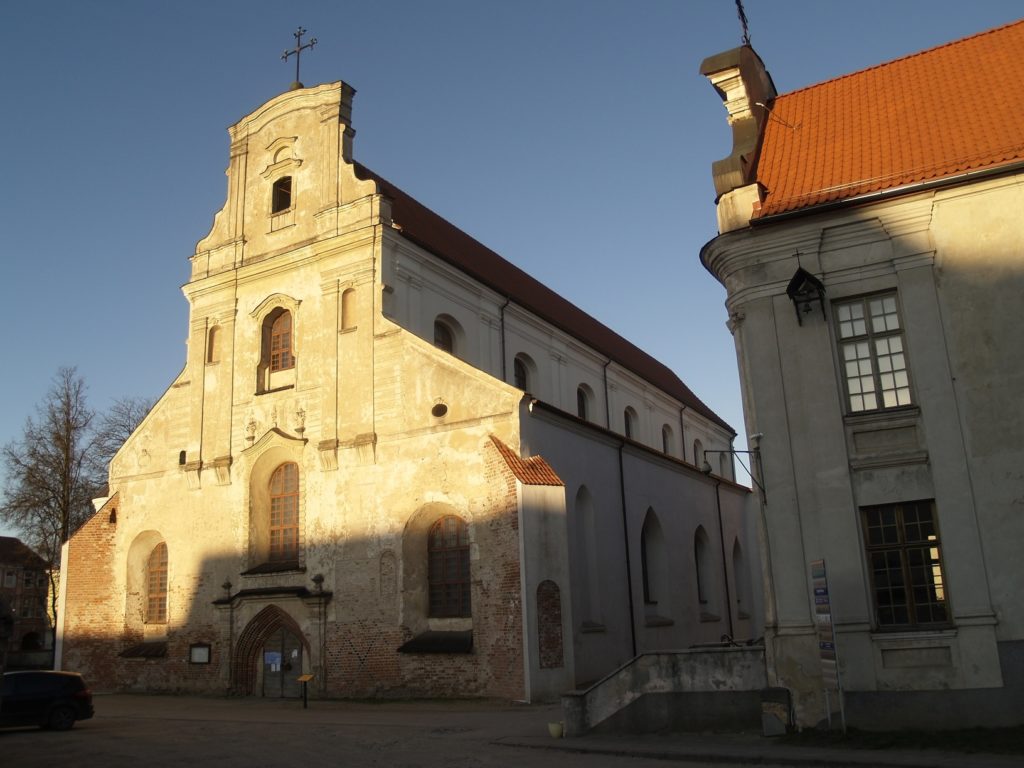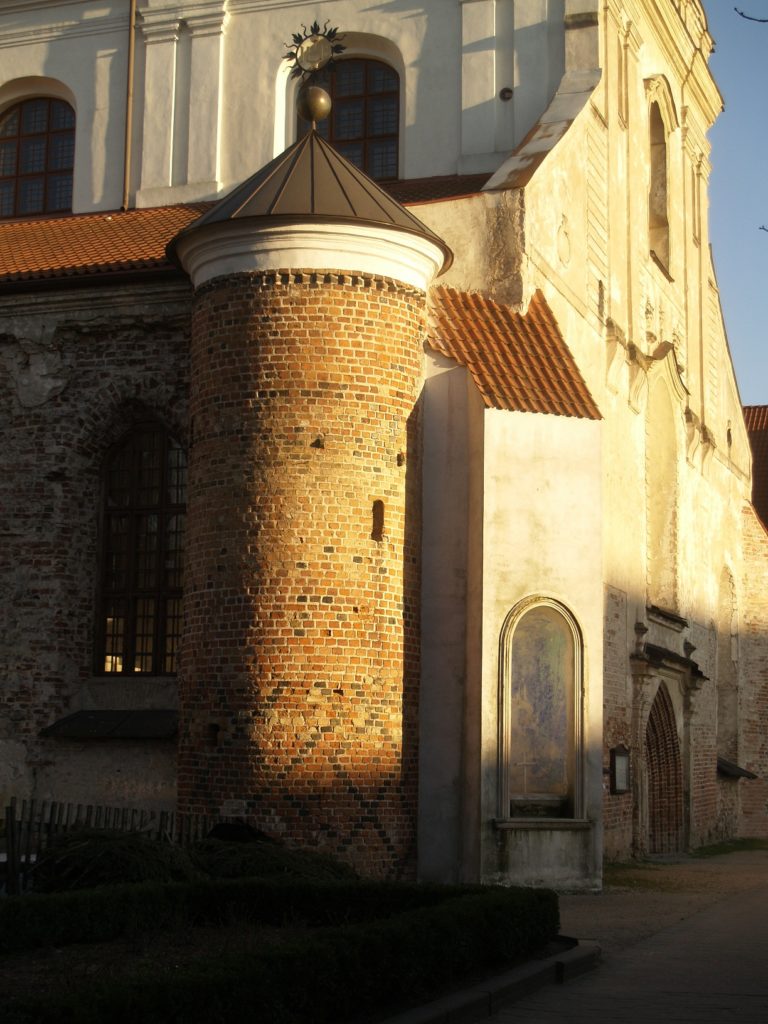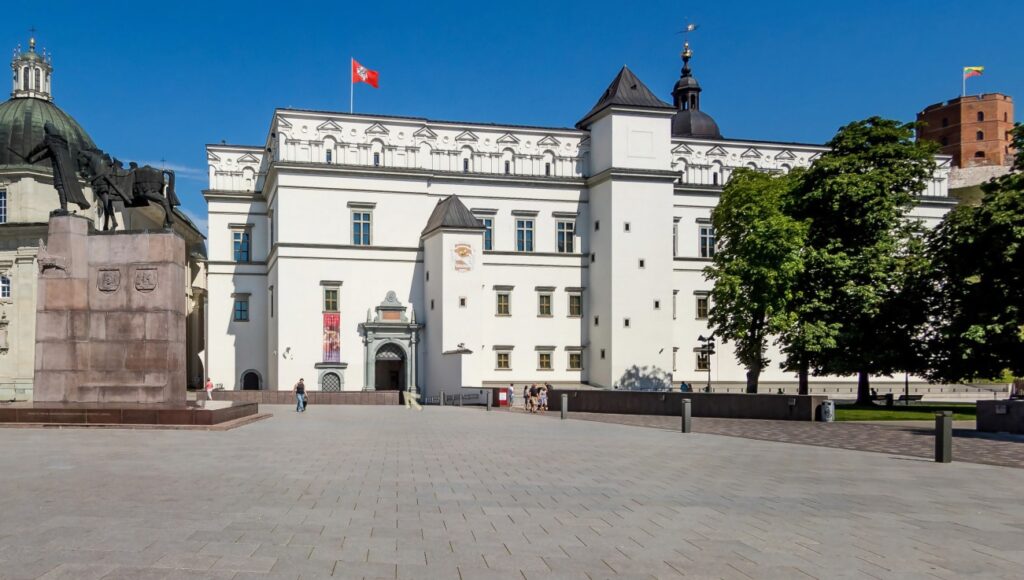Franciscan Church in Vilnius
Introduction

Franciscan Church (Pranciškonų St.1) is situated in between Trakų, Kėdainių, Lydos and Pranciškonų streets.
A brick church or chapel stood on this site as early as the middle of the 14th century. Burial sites dating from the late 13th-early 14th century have been discovered. They were partly destroyed while laying the church foundations.
Thus, before the construction of a brick church, a cemetery was located on this site, apparently at a wooden church. Burials took place according to Christian traditions. This allows us to assume that it is one of the earliest Catholic sites in Vilnius.
The Franciscans established themselves on this site before Lithuania’s Christianization. Their church is one of the oldest city buildings
Franciscan Church Architecture


The church is Gothic with some Baroque forms that it acquired in the late 18th century. The general proportions of the church bear witness to the early Gothic period.
At the crossing of Trakų and Pranciškonų streets stands a Baroque Suzin Chapel with an elegant portal and semi-round apses.
Between the chapel and the church, a monument to Jozef Montwill, public figure, was erected in 1932. By his efforts a labour exchange of the society of aid for the poor was established in a library hall of the monastery.
Interior of The Franciscan Church

Impressive is the three-nave interior space with two Gothic chapels : of St.Laurence and St.Ivo. In the chapels rib-and-panel vaults have survived.
On the north side there is one Renaissance chapel. A statue of the Holy Virgin Mary considered miraculous was unveiled in the church in 1992. South of the church stood an excellent Gothic quadrangular belfry with inlaid ornaments, pulled down in 1872.
The church was partly destroyed by the French army that used it as a granary (1812). The church was returned to the Franciscan monks in 1930.
During Soviet times it again held an archive. Recently it was returned to its parishioners and renovation works began. In 1908-17 it housed the office of the Lithuanian Scholarly Society and for home time was home to Jonas Basanavičius.


